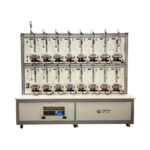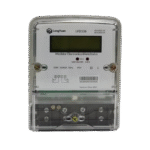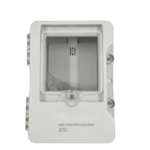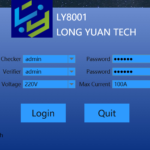Power Line Communication (PLC) allows data to be sent over existing power lines. This means that commands can be read and executed using only electrical wiring connected to the energy meter.
It is the most cost-effective method for AMI-solutions. Communication with domestic meters, first only for reading purpose, became popular in the late 90s of the last century. Now you can find a bunch of different principles.
Since the majority of PLC-systems can not transmit data to the primary side of transformers, we consider here only the low-voltage side.
Transmission Rates
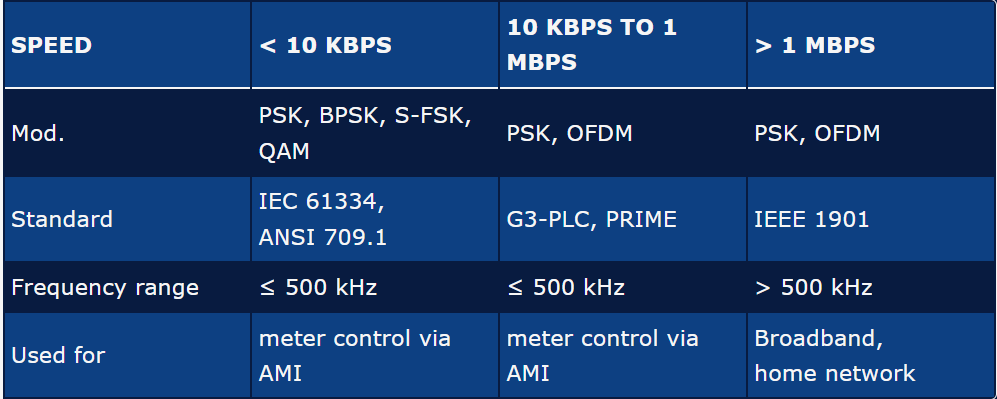
Modulation Methods
We have a wide variety of modulations when using power-line communication.
→Frequency Shift Keying (FSK)
→Spread Frequency Shift Keying (S-FSK)
→Phase Shift Keying (PSK)
→Quadrature Amplitude Modulation (QAM)
→Binary Phase Shift Keying (BPSK)
→Orthogonal Frequency Division Multiplexing (OFDM)
The actual trend is going to OFDM. This modulation offers the highest transmission rates. Back draw, it needs an additional DSP (digital signal processor). The microcontroller can’t deliver the processing speed.
In addition, we can now find different particular proprietary standards:
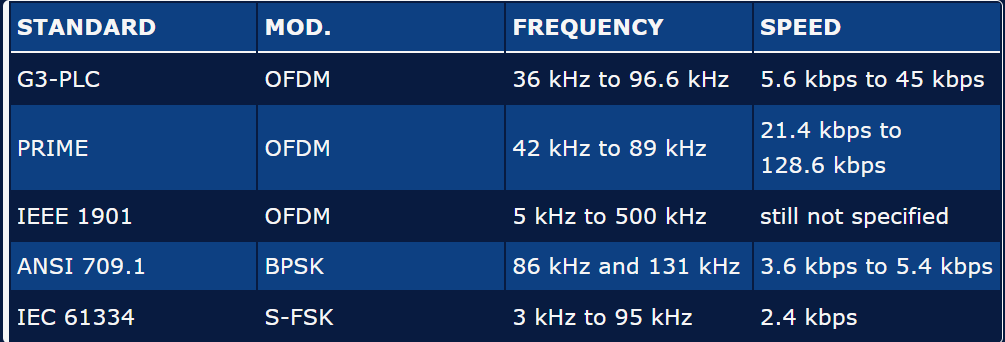
kbps = kilo bit per second
Allowed Frequency Bands by Regions
Different regions of the world have different frequency bands allocated to narrowband PLC for usage with smart meters.

CENELEC – European Committee for Electrotechnical Standardization
EPRI – Electric Power Research Institute
FCC – Federal Communications Commission
ARIB – Association of Radio Industries & Businesses
Conclusion
The fastest data communication between energy meter and data-concentrator unit can be achieved with OFDM modulation. Nevertheless, the communication success rate is depending on the topology and grid infrastructure.
So for certain regions, a slower communication speed can lead to higher AMI-system performance.
